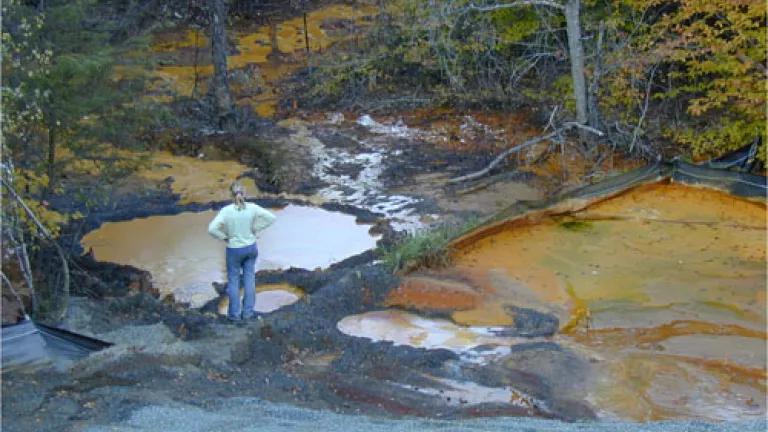
Alaska is sending EPA mixed messages. On the one hand, Alaska Attorney General Michael Geraghty has told EPA to steer clear of Pebble Mine. On the other hand, he just asked EPA to clean up the Red Devil mine.
Does Alaska want EPA’s help, or not?
When it comes to Pebble Mine, the answer is definitely not.
Pebble Mine is a gigantic gold and copper mine proposed at the headwaters of the world’s greatest wild salmon fishery in Bristol Bay, Alaska. Because the mine (and its 10 billion tons of toxic waste) would threaten salmon (which are the lifeblood of the region), Alaska Native Tribes, the Bristol Bay Native Corporation, commercial fishermen and others have asked EPA to use its authority under the Clean Water Act to protect Bristol Bay and its salmon. In response, EPA initiated a scientific review of the potential impacts of large-scale mining on Bristol Bay, which concluded that large scale mining could have devastating impacts on the water, salmon, and wildlife of the region—and on the people who depend on those resources for their survival.
Alaska Attorney General Michael Geraghty has been unabashedly critical of EPA’s involvement. In a letter to EPA, Geraghty called the agency’s Watershed Assessment “unlawfully preemptive, premature, arbitrary, capricious and vague.” Geraghty also wrote on op-ed in the Anchorage Daily News detailing why EPA should stay away from a preemptive decision on Pebble Mine and instead leave the permitting up to the state (never mind that Alaska has never said “no” to a large-scale mine).
But when it comes to cleaning up the Red Devil mine, the answer is different.
Seeps at base of TP1, Elizabeth Copper Mine Superfund Site Vermont, USA
Red Devil is an abandoned mercury mine oozing toxins in Southwest Alaska. After sediment tests found levels of arsenic and mercury more than 100 times federal screening level and other tests found higher-than-normal levels of mercury in fish, Geraghty asked EPA for help. On behalf of the state, he asked EPA to place the Red Devil site on its Superfund national priorities list. This designation would give EPA control and, according to Geraghty, help ensure proper clean up.
So what’s the real message?
Although there is irony in the State of Alaska taking contrary positions, I think the bigger message is that mines will eventually leak, leaving taxpayers to foot the bill. Extreme cases like Red Devil require EPA to step in under Superfund.
Instead of waiting for contamination to occur at the Pebble Mine – as it inevitably will – we should encourage EPA to act now to stop the project before contamination can occur. We know enough to know that Pebble Mine would have devastating impacts on the region. We know enough to say no –now.
Please join the Alaska Natives, Bristol Bay residents, and commercial and subsistence fishermen and encourage EPA to use its authority under the Clean Water Act to proactively protect the region. It’s time to stop the Pebble Mine.
Photo Credit: U.S. Geological Survey

